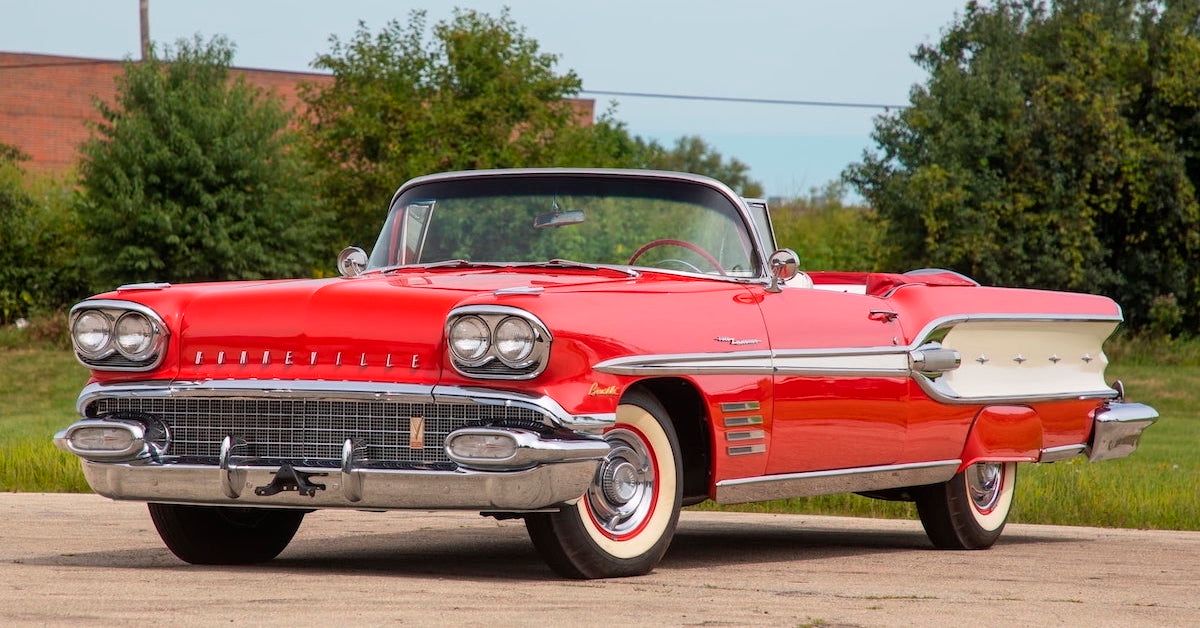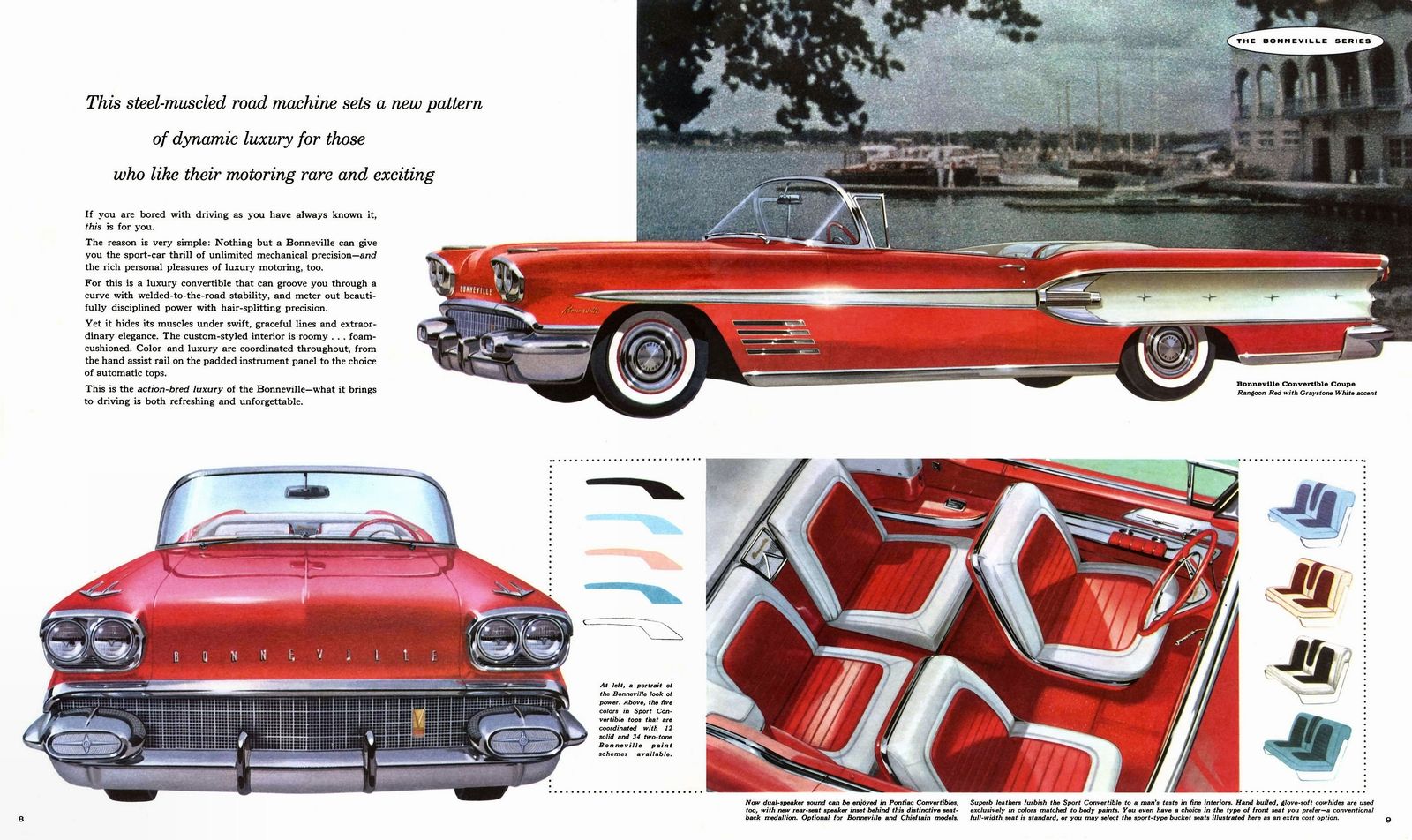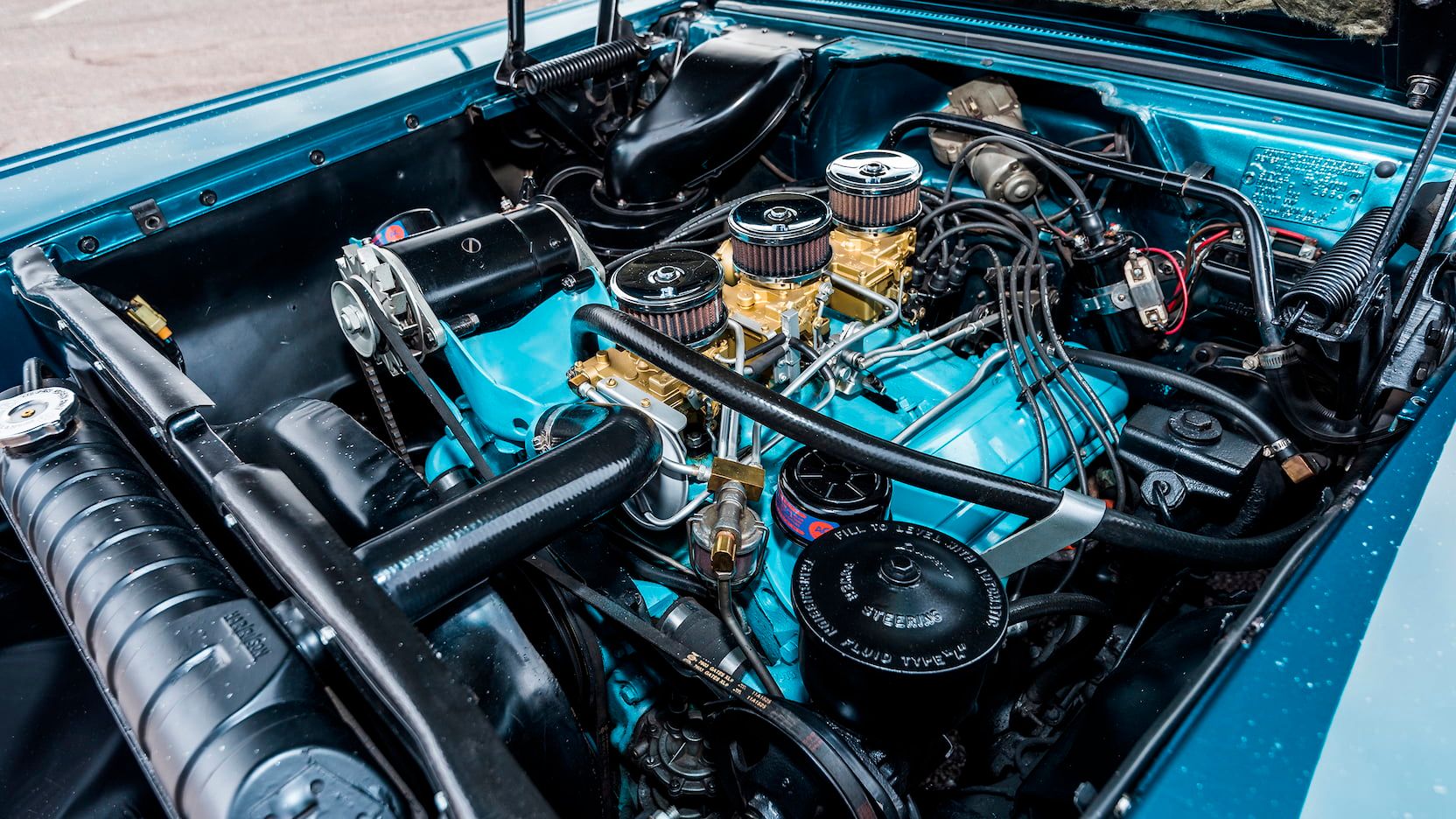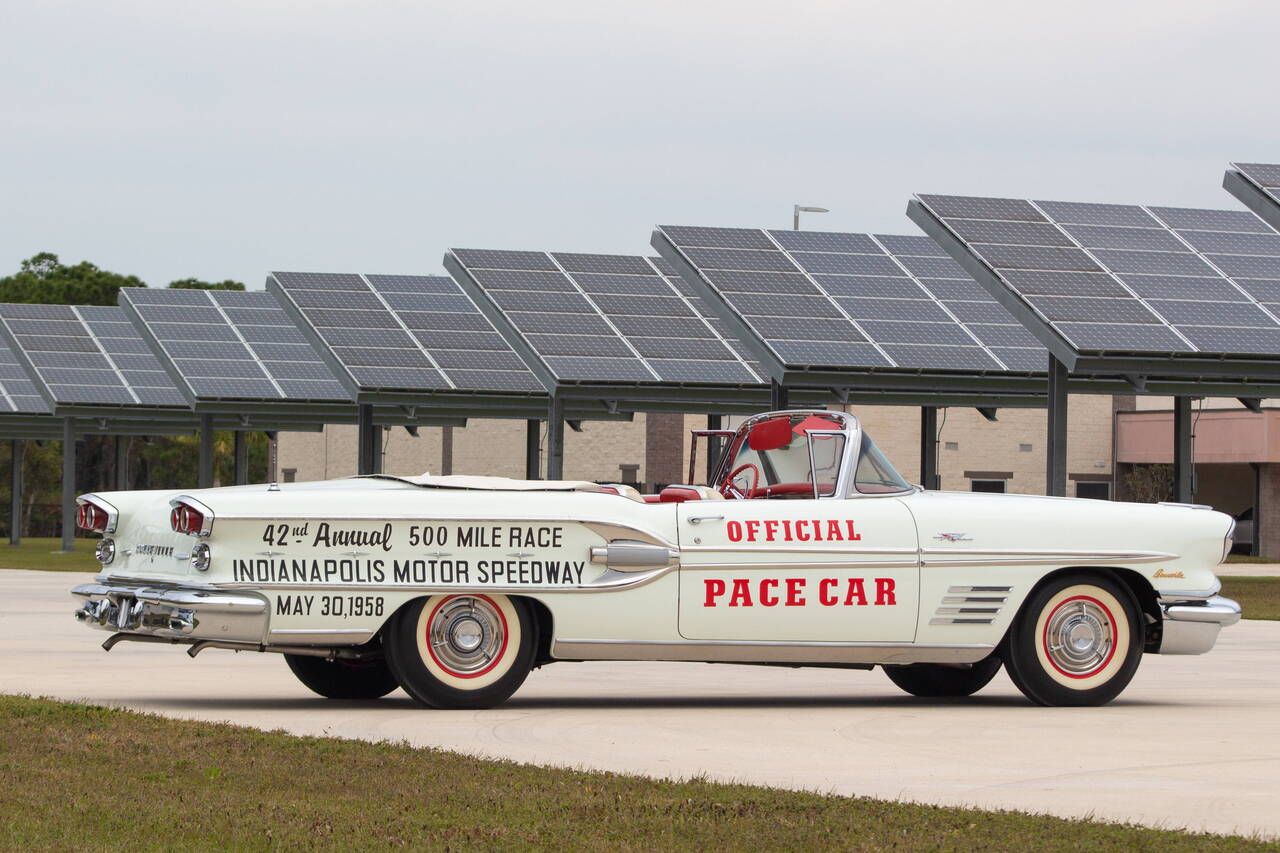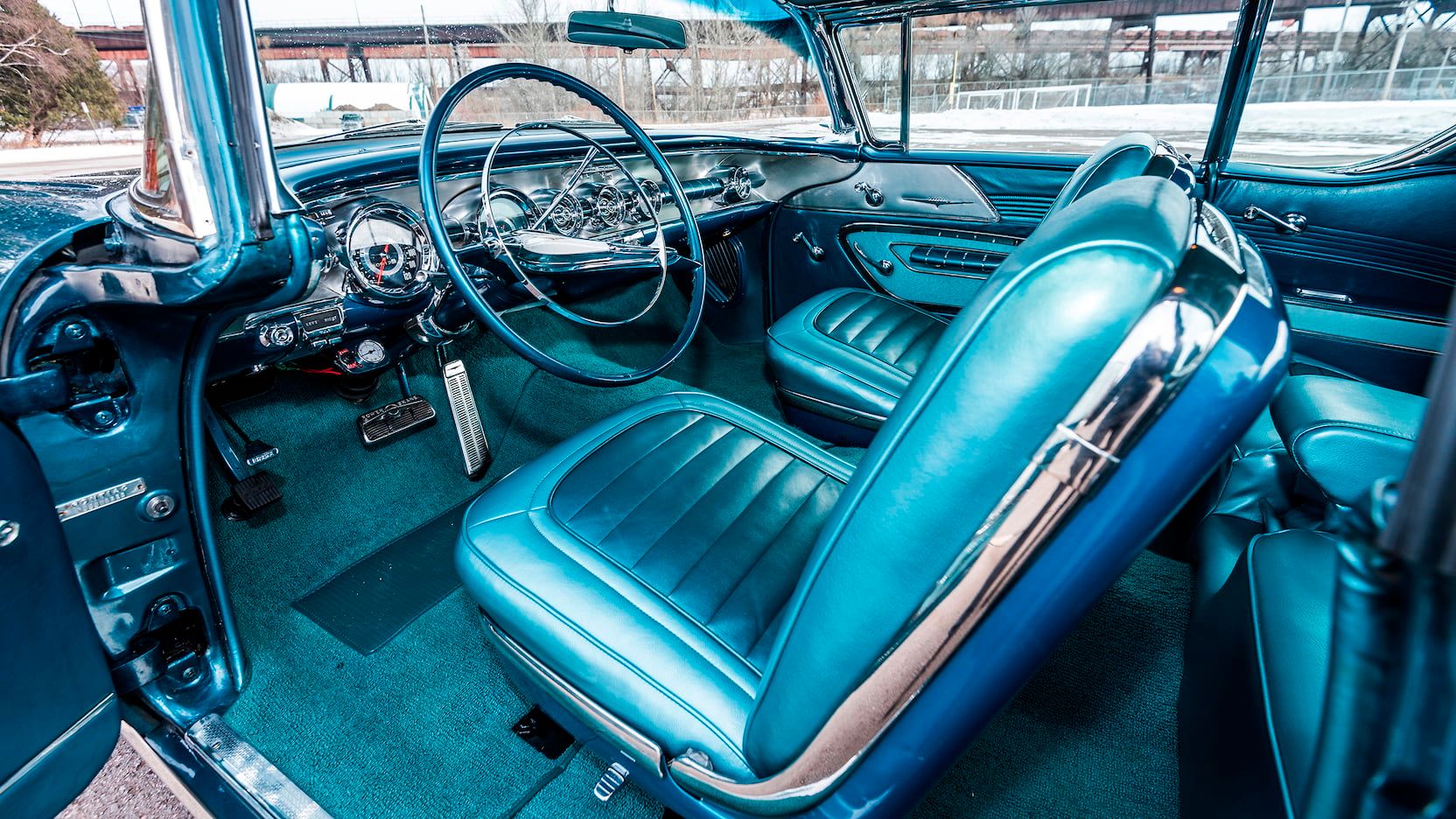The most popular GM cars from the 1950s are generally the 1955 to 1957 models, like the 1957 Chevy. In 1959, GM models took a sharp turn into low and wide styling that would carry into the 1960s.
The unique 1958 models were overlooked among collectors for many years, not just because they were single-year models but because they weren't particularly attractive. They didn't fit with the popular mid-1950s styling of earlier models and wasn't sleek like subsequent models. That leads us to the Pontiac models.
The 1958 Pontiac Bonneville is no exception. What it did offer was performance. Let's take a closer look at the classic car.
Brief Overview Of The 1958 Pontiac Bonneville
Previously an upgrade trim on the 1957 Pontiac Star Chief, the Bonneville became its own line in 1958. That model year saw a move to dual headlamps situated between the massive chrome grille. Being at the early times of the space race, that motif was carried around the exterior fenders, with rocket-inspired decorations on top and sides. At the rear, the double round red taillights featured the same space-age theme.
The first generation 1958 Bonneville was built on the same chassis as the Star Chief. With the intention for the Bonneville to be a performance model, many of the standard features of the Star Chief were optional, reducing cost and weight. Because of the performance features included in the Bonneville, it was the most expensive Pontiac model that year.
The 1958 Pontiac Bonneville: A True Performance Car
For their dollars, Bonneville buyers received a lot of performance. A 370 CID Pontiac V8 was the base engine. Topped with a standard four-barrel carburetor, the engine was restricted to 255 HP. The standard transmission was an ancient three-speed manual transmission that limited power. Upgraded to the optional four-speed Super Hydramatic automatic, and power was increased to 285 horsepower.
Induction options were the Rochester mechanical fuel injection system or the Tri-Power setup that featured three Rochester two-barrel carburetors.
The Tri-Power principle of operation was that only the center carb fed the engine in everyday driving. The two outside carburetors opened up with the throttle pedal moving toward the floor. This provided a greater volume of air/fuel than a four-barrel but also better distributed the fuel/air mixture among all eight cylinders.
Other options include a revised cylinder head that brought the compression ratio up to 10.5:1 and a more performance-oriented camshaft. The Tri-Power setup developed 300 horsepower, while the fuel injection option, costly five times more than the carb upgrade, produced 310 horses.
Due to its price, reliability, and drivability issues, only 400 Bonnevilles were equipped with the Rochester fuel injection system until Pontiac dropped it as an option mid-year. Despite the slightly-reduced power output, Pontiac chose a Tri-Power Bonneville to serve as the pace car for the 1958 Indianapolis 500.
The 1958 Pontiac Bonneville: Specially-equipped For NASCAR Competition
In those days, NASCAR stock cars really were stock cars, so factory upgrades were essential to racers. Pontiac developed two NASCAR-approved packages intended for oval track competition. The PK package came with a four-barrel carb, special cylinder heads, 10.5:1 compression ratio, dual exhaust, and other mods that raised horsepower to 315. The slightly more expensive PM package added the Tri-Power carburetors, increasing output to 330 horsepower.
Buyers in 1958 had a choice between the two-door Sport Coupe and Convertible, sharing the A-body main body structure as the 1958 Buick, Chevrolet and Oldsmobile. Three-quarters of sales were the coupe body style. Most of the Bonneville models were ordered with automatic transmissions.
Options included front bucket seats with power memory that facilitated the driver's easy entrance/exit as the seat moved back to the most rearward position. Also advanced for the time was the available Ever-Level Air Ride suspension. Other options included rear bucket seats, a sliding interior sun visor and electric windshield wipers that replaced the usual engine speed-dependent vacuum wipers.
Also available was a removable Sportable AM transistor radio (one of the first-ever in a car) with rear seat speakers. The radio operated using a separate internal battery when removed from the car. A feature that came with the radio was an electric antenna that extended when the radio was turned on and hid in the rear fender when the radio was turned off. The Speed Minder option signaled a warning buzzer when the car exceeded the pre-selected speed.
The 1958 Pontiac Bonneville As A Collector Car
While the 1958 Pontiac Bonneville was a single-year body style, it can have a wide range of prices today passed on how it was optioned. Serious collectors prefer well-optioned cars featuring Tri-Power or Rochester fuel injection. The NASCAR-approved PK and PM package cars were primarily driven in races, and as a result, many were destroyed or just plain worn out. Because of the desirability of the options above, restorers will take a lower-powered car and add these high horsepower options. Potential buyers should carefully research the provenance of these upgrade cars.
According to Hagerty, a fully-optioned, concourse No. 1 condition 1958 Pontiac Bonneville is worth $155,000 at auction, with a No. 2 condition car worth $106,000. A condition No. 4 in fair condition is appraised at $32,500 -- cars with lower-powered engines or fewer options trade for less.
Sales between private individuals can sometimes be more affordable. Late last year, a '58 Bonneville in excellent condition equipped with fuel injection and many of the above options traded for $70,500. A glance through online classified found several cars with original paint and pitted chrome trading for under $20,000, some with Tri-Power setup though not disclosed whether the carbs were authentic or added later.

